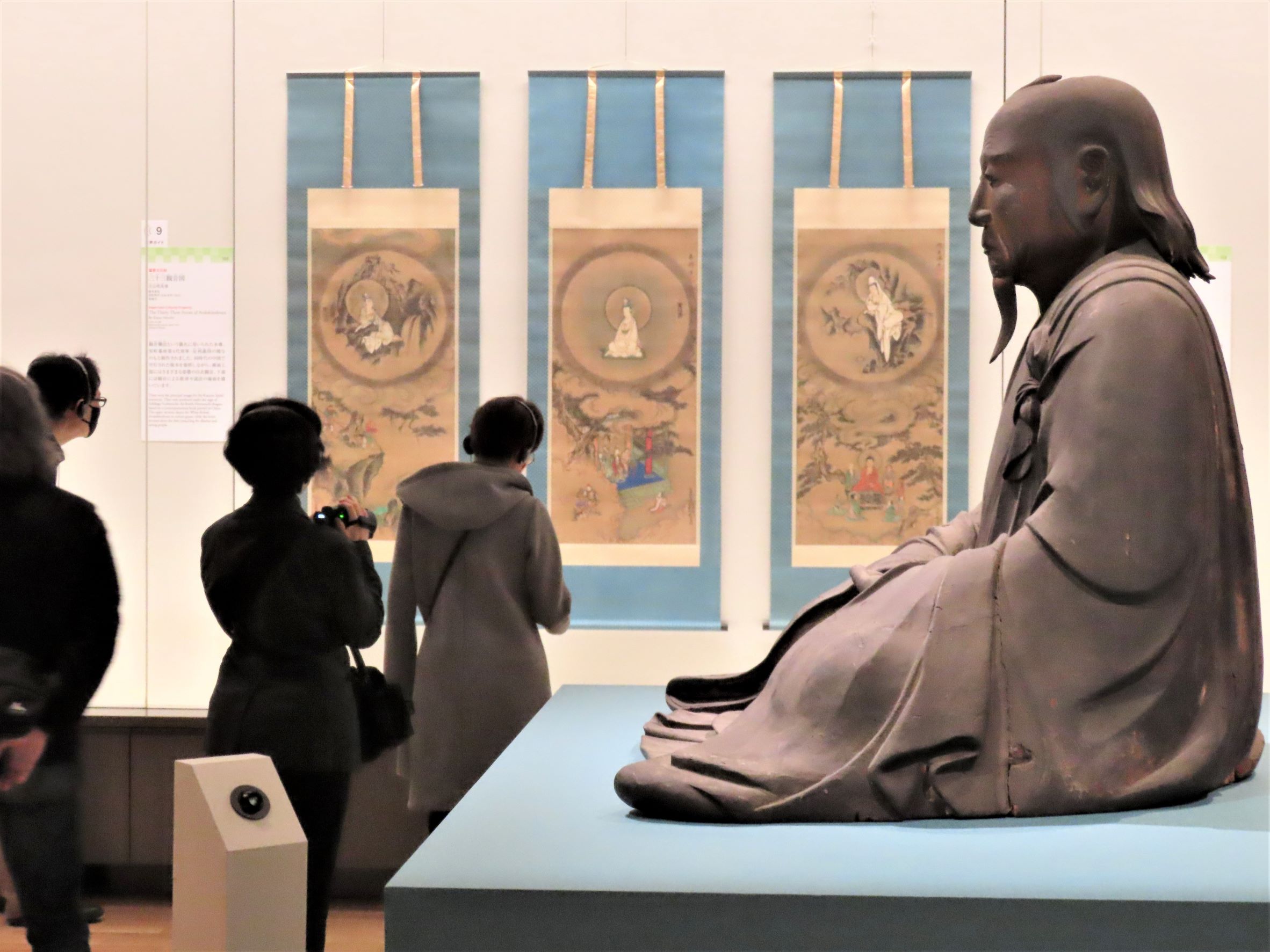
Article provided by: Taito Bunka Marche
Tofukuji is one of the Zen temples representing Kyoto.
Known as a spot for fresh greenery and autumn foliage, it is a famous temple that has preserved many treasures such as ancient documents, calligraphy, classics, and portraits, even though it was devastated by war.
This exhibition, which will be the first opportunity to introduce the treasures of Tofuku-ji Temple, will bring together excellent works of Zen Buddhism culture, such as "The Five Hundred Arhats" by the painter Myocho.
In this article, we will report on the press preview held the day before the event.
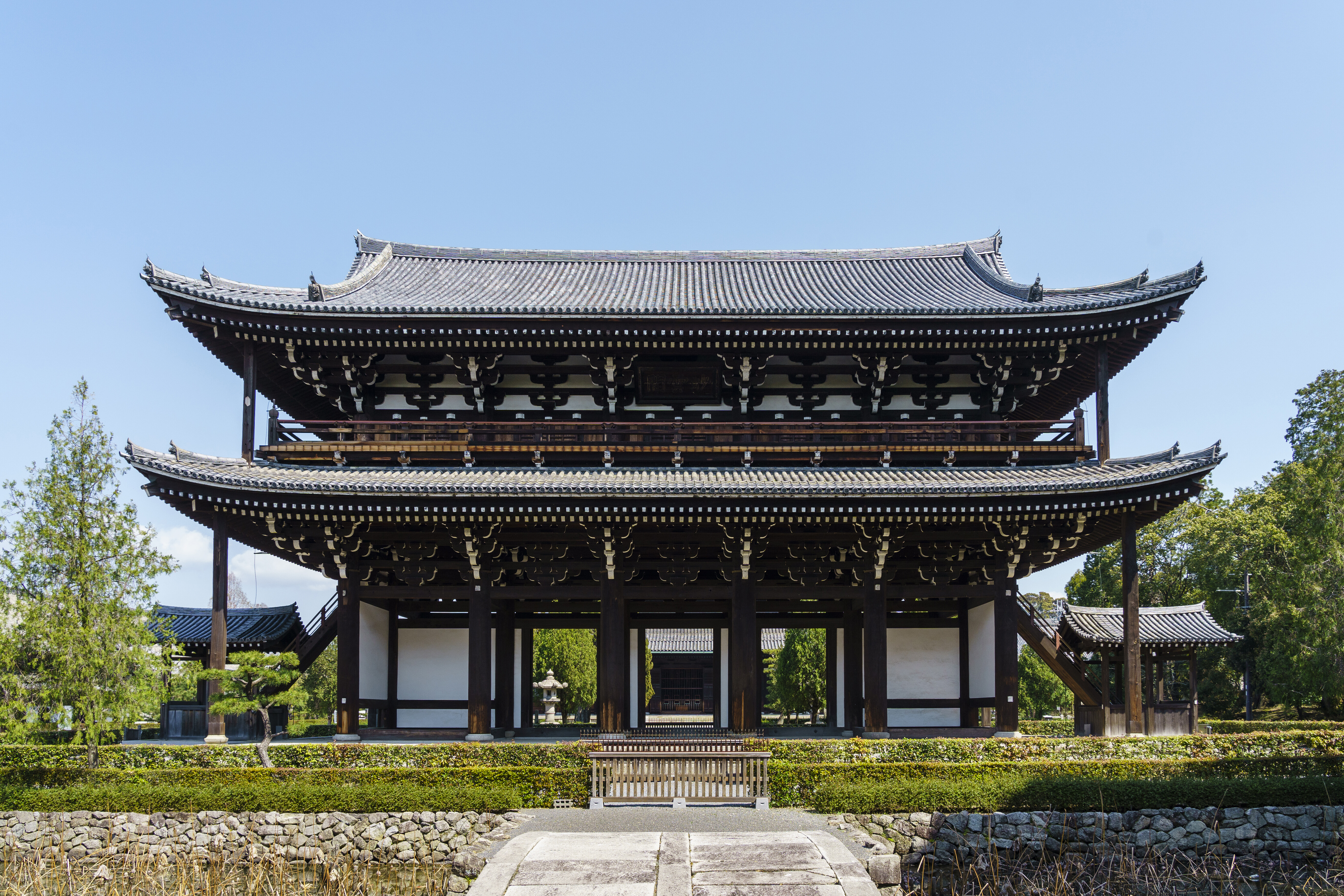
Tofukuji Sanmon Gate
Tofukuji is one of Kyoto's representative Zen temples, and is also known as a spot for fresh greenery and autumn foliage. The name Tofukuji is derived from the fact that each character is taken from Todaiji and Kofukuji in Nara.
Enni, who studied Zen in China, became the founder. Although Tofuku-ji Temple has been in danger of being destroyed by fire many times, it still retains the atmosphere of the Middle Ages and has been handed down to the present day with a number of buildings, and its gigantic temple complex is commonly known as the "Garandzura of Tofuku-ji Temple." .
The special exhibition "Tofuku-ji Temple" traces the history of Tofuk-ji Temple since its foundation, and introduces the full picture of Zen Buddhism culture through exchanges with the continent. It is an exhibition that widely conveys the significance and charm of the exhibition.
Numerous treasures of Tofukuji Temple, where the essence of Zen resides.
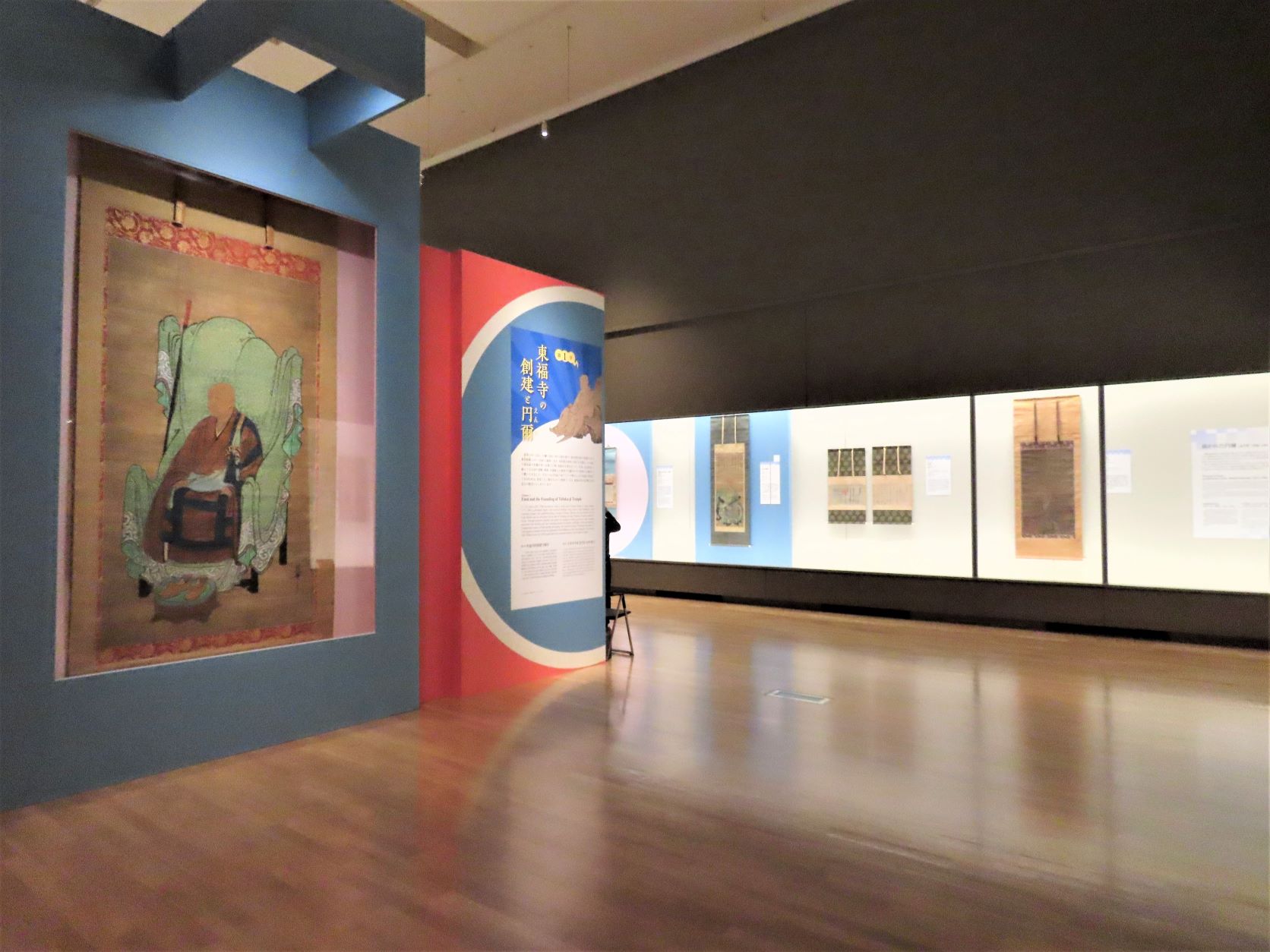
Exhibition hall entrance
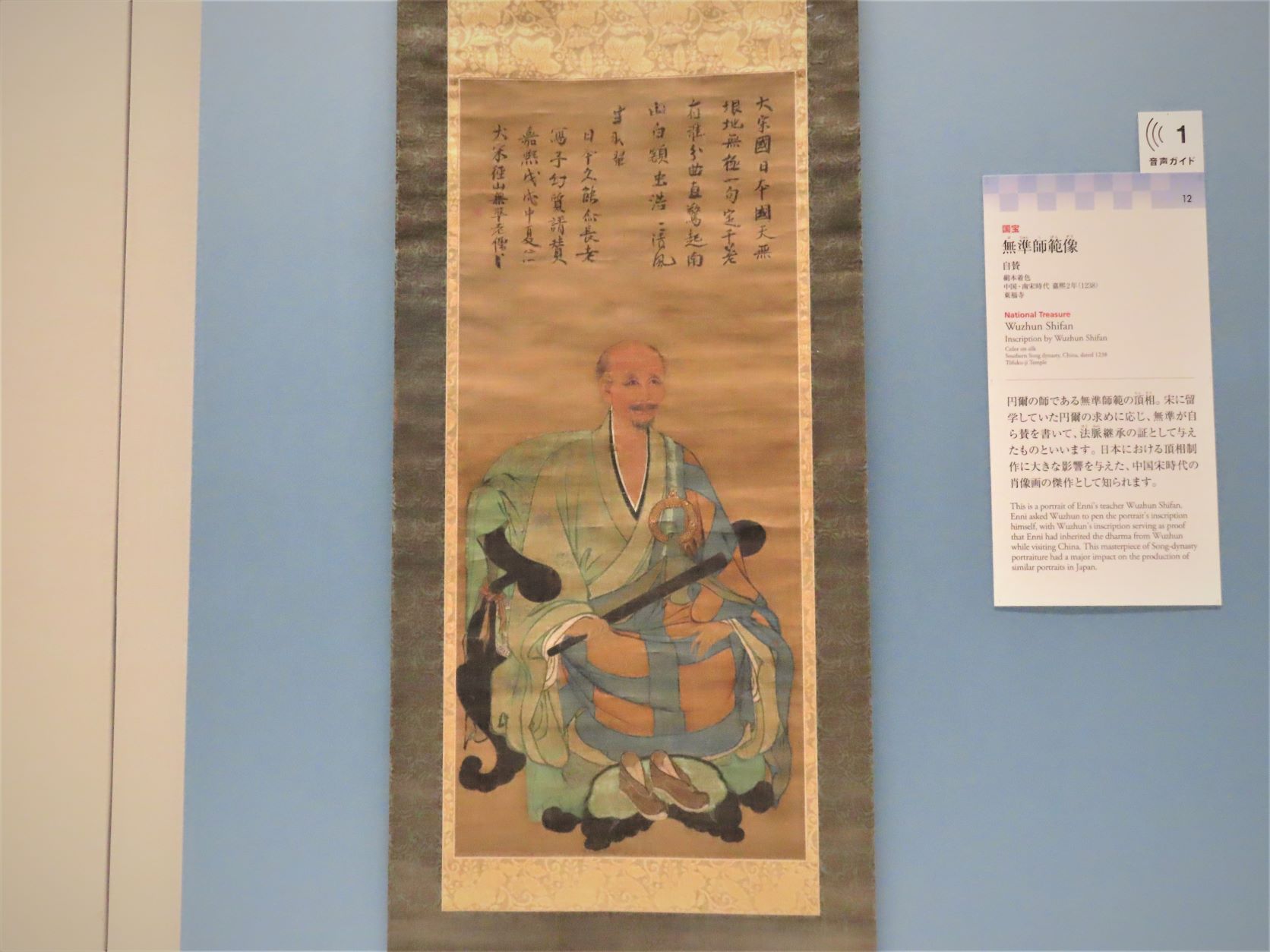
National Treasure Statue of Wu Chun, a teacher of Enni (self-praise, Southern Song Dynasty, China, 1238) Tofukuji Collection, Kyoto Exhibition period: March 7 (Tue) to April 2nd (Sun))
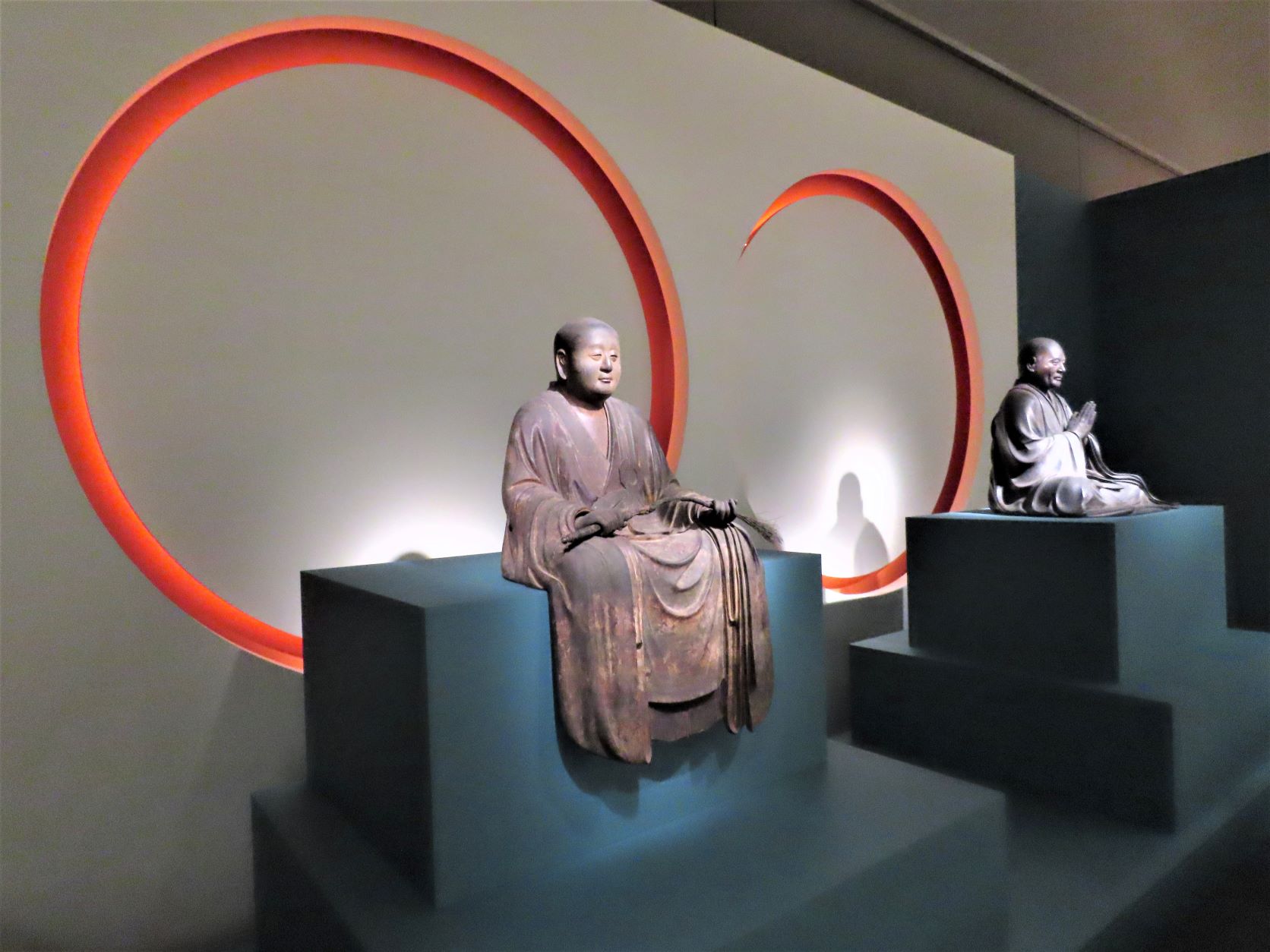
Chapter 2 Exhibition scenery. In the foreground is a seated statue of Junku Kurayama (Kamakura period, 14th century, Kyoto, Eimei-in storehouse, on display throughout the year)
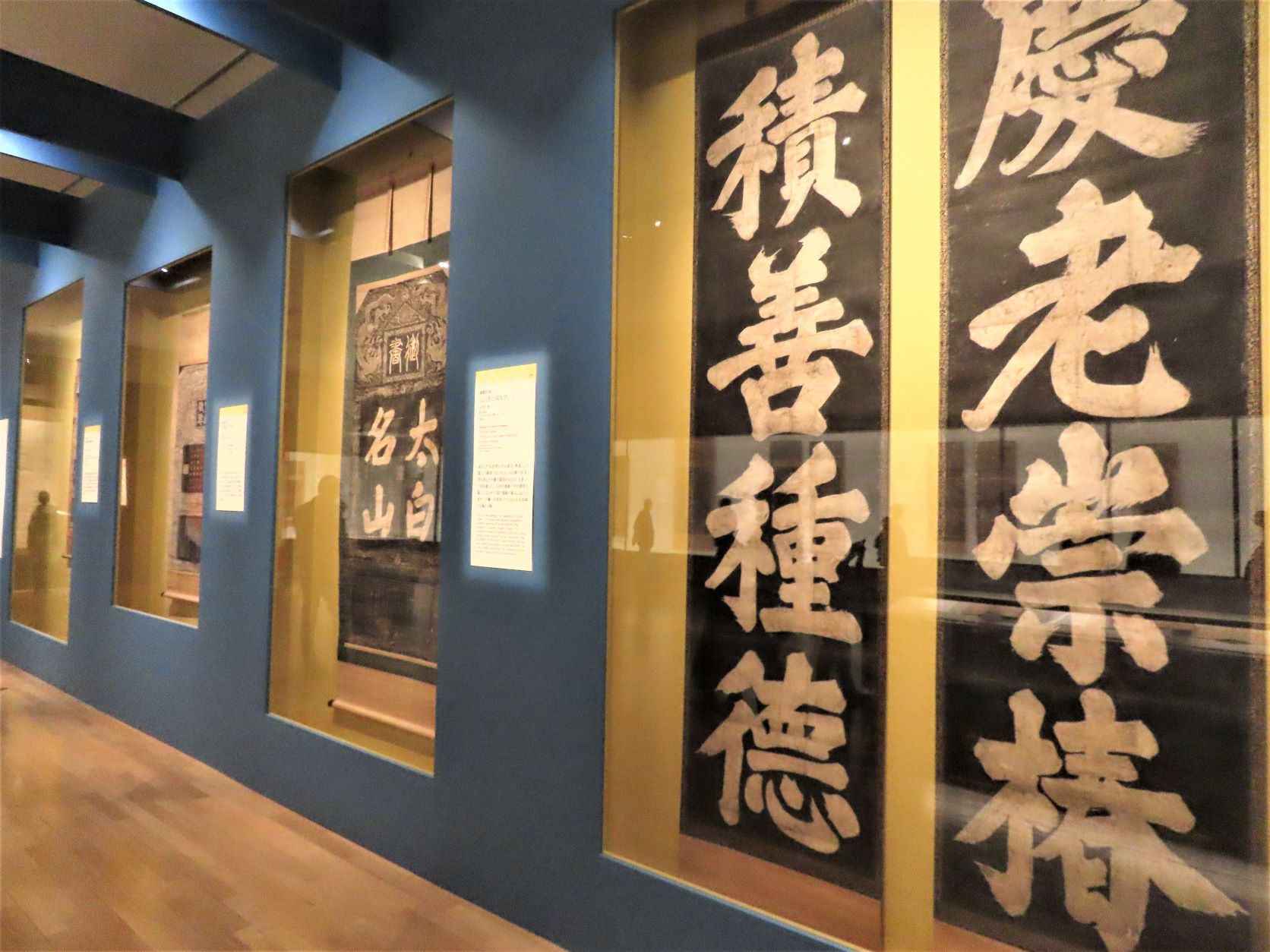
From Chapter 4 exhibition view. Numerous paintings and calligraphy brought about by exchanges with the Chinese Buddhist world
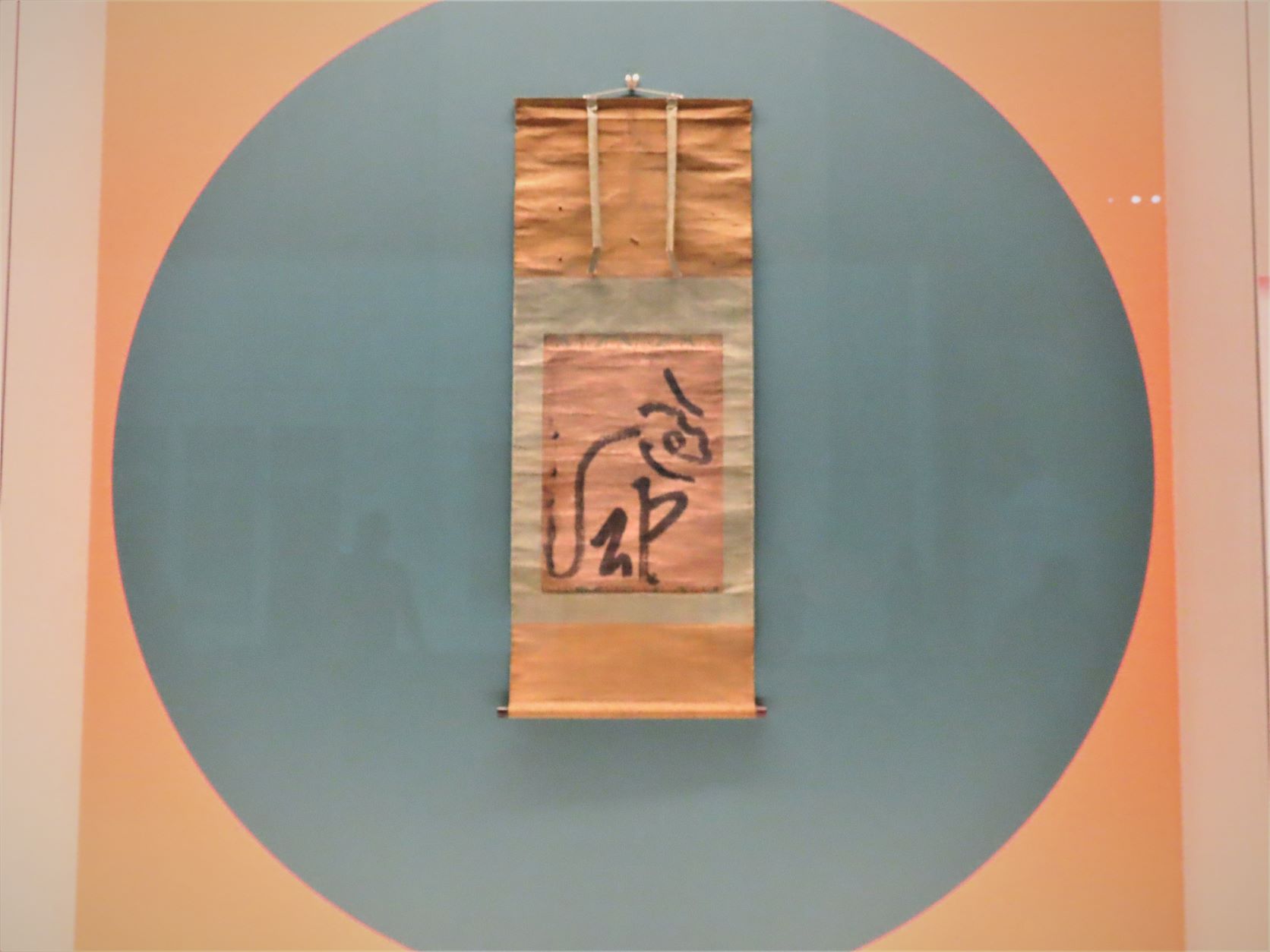
《Tora Ichidaiji》 (Toroseki Master Renpitsu, Kamakura-Northern and Southern Courts period, 14th century, Kyoto, Reigen-in storehouse, on display throughout the year)
The exhibition hall of this exhibition is divided into the first venue and the second venue,
- Chapter 1 The foundation of Tofukuji Temple and Enni
- Chapter 2 Formation and Development of the Seiichi School
- Chapter 3 Legendary painter of Buddhist paintings, Myocho
- Chapter 4 Zen Buddhism Culture and International Exchange
- Chapter 5. Huge temples and Buddhist sculptures
It consists of 5 chapters.
Tofuku-ji Temple was listed as the fourth of Kyoto's five great temples during the period of the Northern and Southern Courts, and the main temple Tofuku-ji Temple and its sub-temple have many characteristics that tell the story of Zen Buddhism culture, such as cultural relics introduced from China, buildings, sculptures, paintings, and calligraphy. Cultural heritage is handed down. There are 7 National Treasures and 98 Important Cultural Properties, totaling 105, including Honzan Tofukuji Temple and sub-temple.
In particular, in Chapters 1 and 2, excellent works of Zen Buddhism art related to Enni and his successor, the Shoichi school, such as "Statue of Mujun Shihan" (National Treasure), which is called "the perfection of Southern Song portraiture", are lined up. increase.
What left a personal impression on me was Enni's grandchild disciple, Tofuku-ji Temple's 15th head priest Koseki Shiren (1278-1346 ) . Is it a handwriting representing the character for "tiger" or a picture of a sitting tiger? It's as if you're asking the person watching this , "What do you think you are?"
Myocho's Drawing Skills, the Legendary Painter of Buddhist Paintings
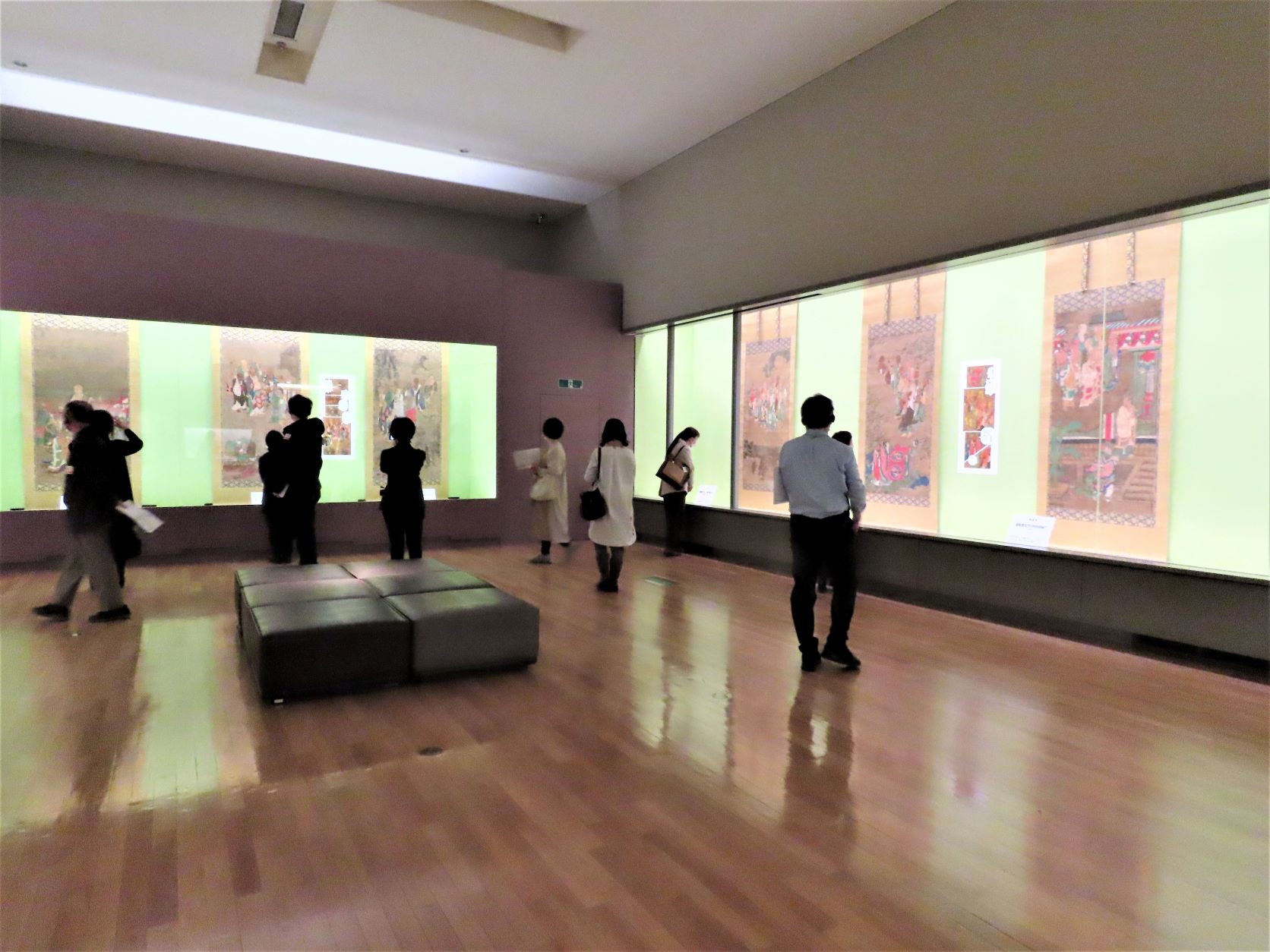
Installation view of the 500 Arhats by Myocho
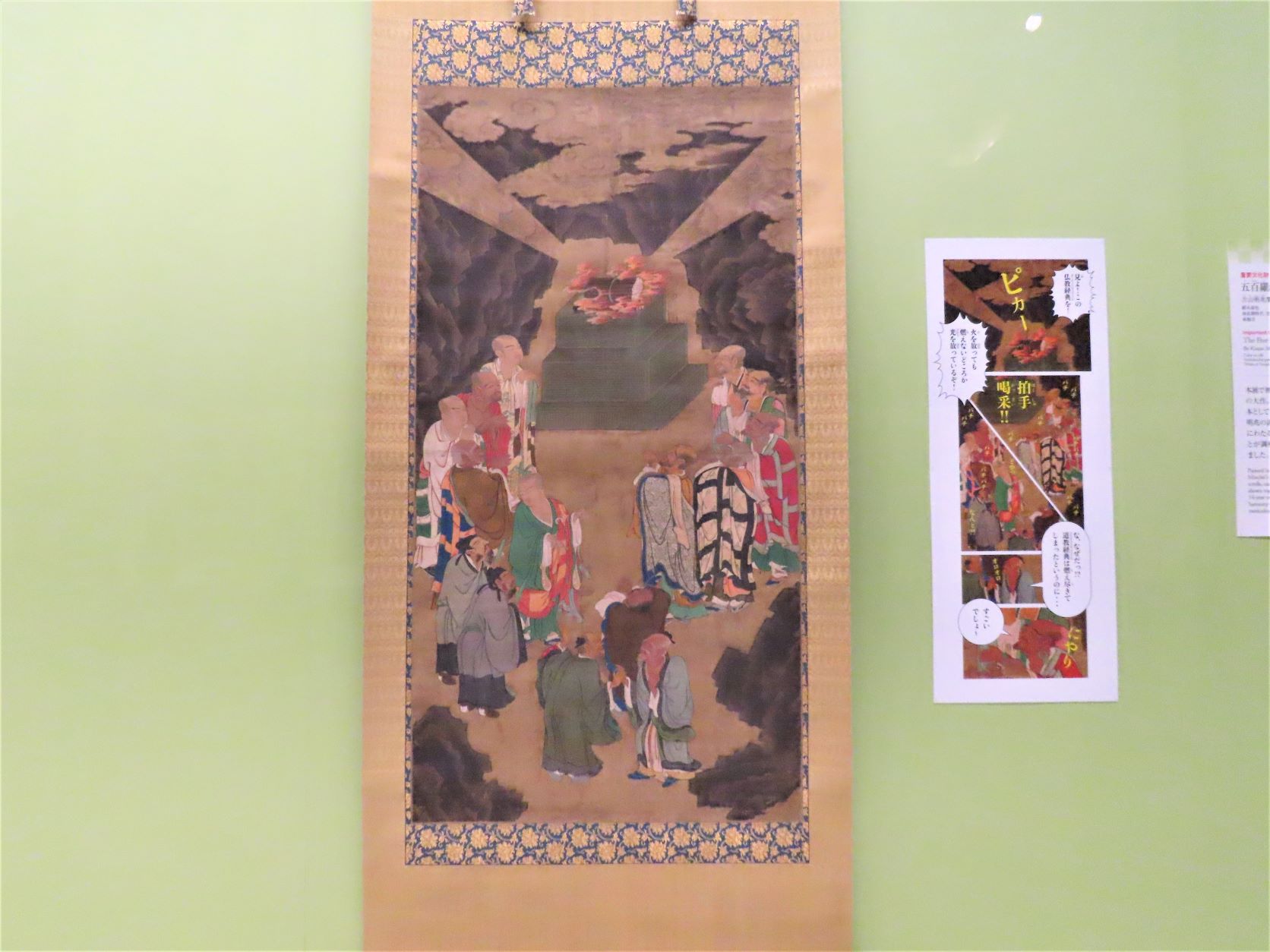
A notable work in this exhibition, The Five Hundred Arhats (Kichiyama Meichou, Nanbokucho period, Shitoku 3rd year (1386), Tofukuji, Kyoto). This is the first issue (exhibition period: March 7 (Tue) to March 27 (Mon)). A unique cartoon is attached next to it
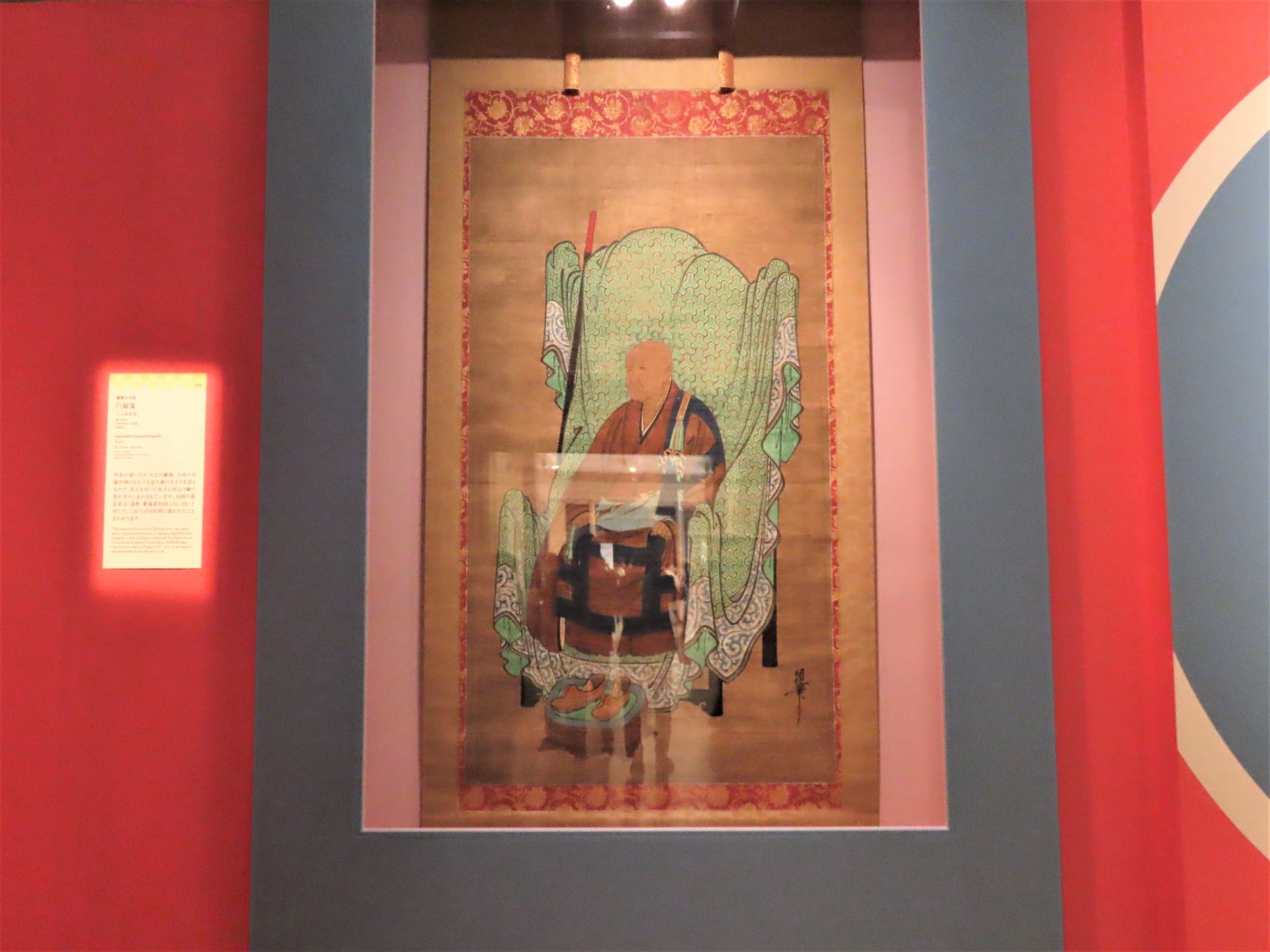
"Statue of Enni" (By Yoshiyama Myocho, Muromachi period, 15th century, Tofukuji, Kyoto, Exhibition period: March 7 (Tue) – April 2 (Sun))
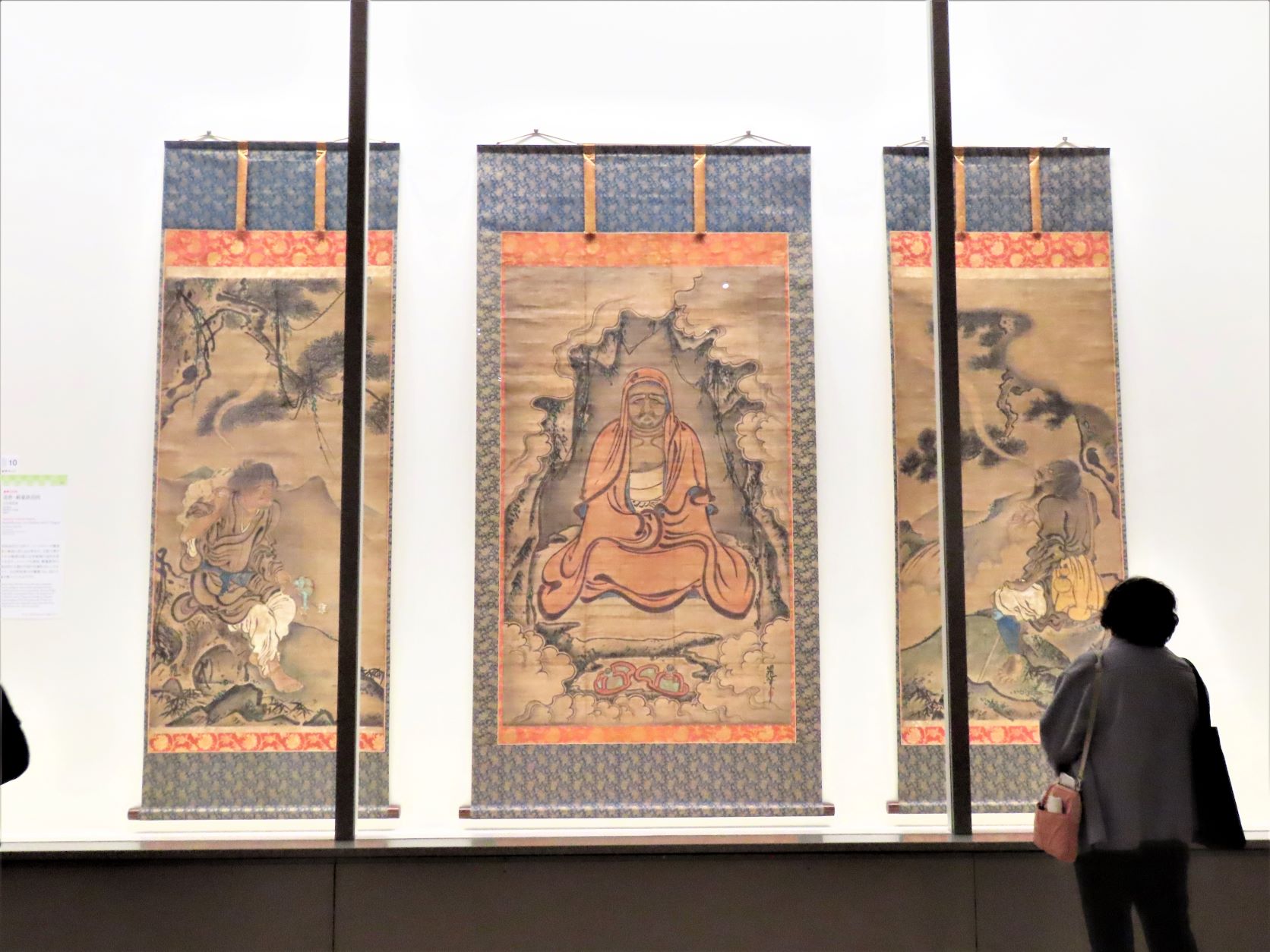
Important Cultural Property 《Bodhidharma and Ebi toad iron kidnapping》 (By Yoshiyama Meichou, Muromachi period, 15th century, Tofukuji storehouse, Kyoto Exhibition period: March 7 (Tue) – April 9 (Sun))
The highlight of this exhibition is the monumental masterpiece "The 500 Arhats" by Myocho, a painter of Buddhist images who is revered as a "master of painting." This work, which will be exhibited for the first time after restoration, is a representative work of the young Myocho, in which ink and rich colors are in perfect harmony. Two widths are still in existence at the Nezu Museum in Tokyo. This exhibition will be a valuable opportunity to reveal the whole picture for the first time (exhibition period varies depending on the width).
Next to it is a comic that explains the contents in a unique way, which is also a point that shows the playfulness unique to Tohaku.
Also on display is " Bodhidharma and Eto Tetsukakuzu," known as a masterpiece of Mingcho's maturity period. The symmetrical beauty of the composition, the intricate depiction of shadows, and the bright and relaxed brush strokes that anticipate Edo paintings… It is said to be a copy of a masterpiece of Chinese painting, but it is a masterpiece that allows you to enjoy Meicho's exceptional drawing power and originality.
Enveloped in the overwhelming power of a giant cathedral
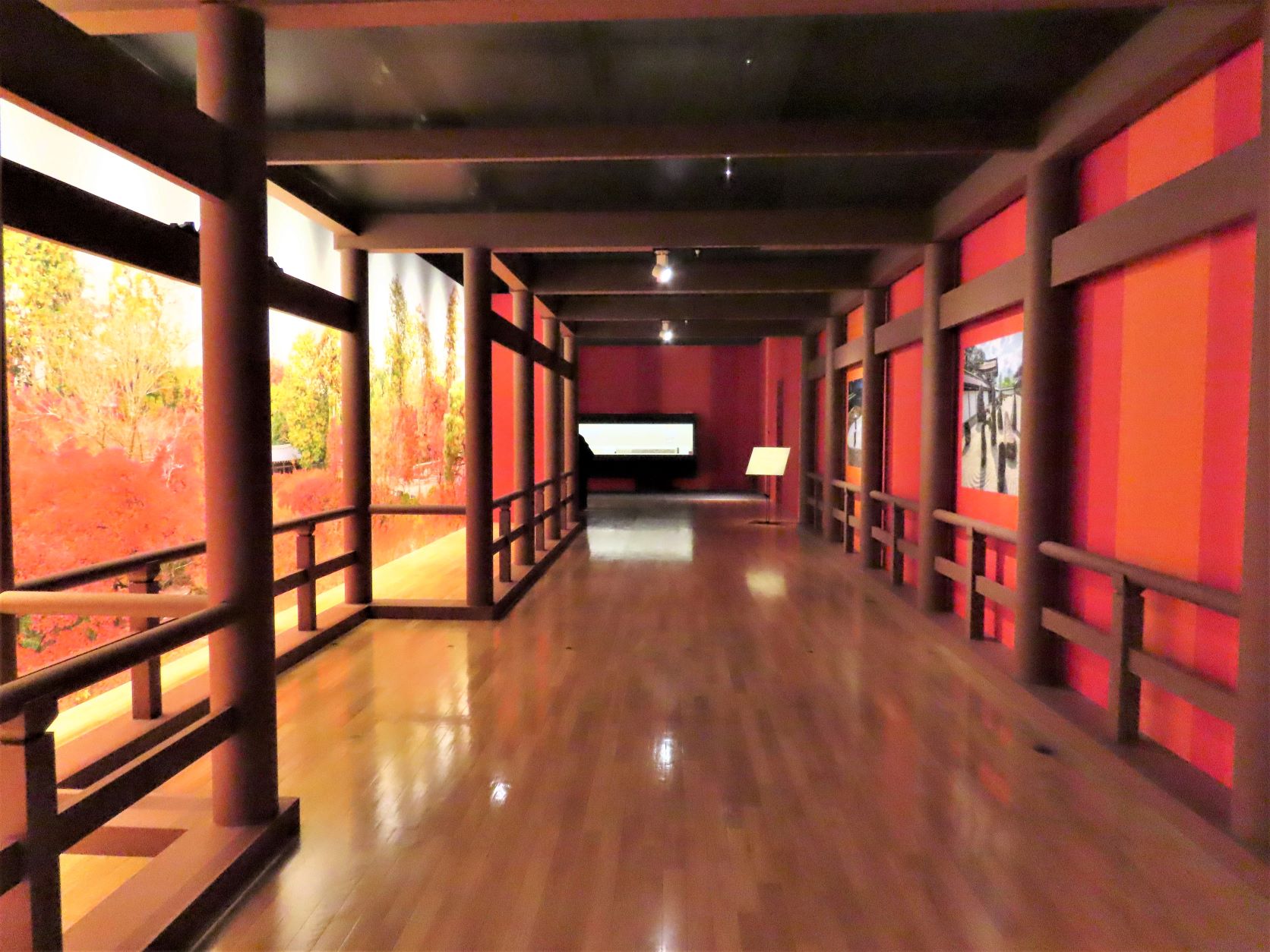
In the passage leading to chapter 5, a life-size reproduction of Tsutenkyo Bridge, a tourist spot that represents Tofukuji Temple.

Chapter 5 with extra-large Buddha statues suitable for a huge temple

Standing statues of the Four Heavenly Kings (on display throughout the year) are on display. The standing statue of Tamonten in the foreground on the right is from the early Kamakura period and has a strong Unkei style.

《Buddhist hands》 (Kamakura-Northern and Southern Courts period, 14th century, Kyoto, Tofukuji storehouse, on display throughout the year)
Chapter 5 is where you can experience the actual “garan mask of Tofukuji Temple”. You will be overwhelmed by the scale and majesty of the extra-large Buddha sculptures that are suitable for a huge temple.
The standing statues of Tamonten, which will be unveiled for the first time after the restoration, and the standing statues of Kasho and Anan, both of which are important cultural properties, as well as the hands of the Buddha, which boasts a gigantic 2-meter hand. Also pay attention. It is a valuable remains that proves the enormous size of the former principal image that disappeared.
The exhibition will be held until May 7th (Sun). Experience the vivid colors of Zen Buddhism culture and the overwhelming power of a huge temple at the venue.
Overview of the event
| exhibition period | March 7 (Tue) – May 7 (Sun), 2023 *Exhibits may be changed during the exhibition |
| venue | Tokyo National Museum Heiseikan (Ueno Park) |
| Opening hours | 9:30-17:00 (admission until 30 minutes before closing) |
| closing day | Monday *Open on March 27 (Mon) and May 1 (Mon) |
| viewing fee | General 2,100 yen University student 1,300 yen High school student 900 yen *Advance reservations are not required for this exhibition. If it is crowded, you may have to wait to enter. *You may have to wait to enter when it is crowded. ※Junior high school students and younger, people with disabilities and one caregiver are free of charge. Please show your student ID card, disability certificate, etc. when entering the building. * With this exhibition admission ticket, you can also see the general cultural exhibition only on the day of viewing. (Note) For details, please check the ticket information page on the official website of the exhibition. |
| Exhibition official website | https://tofukuji2023.jp/ |
*The content of the article is as of the time of the interview. It may differ from the latest information, so please check the official website of the exhibition for details. It is also possible that the works mentioned in this article have already been exhibited.
<Past coverage report>


